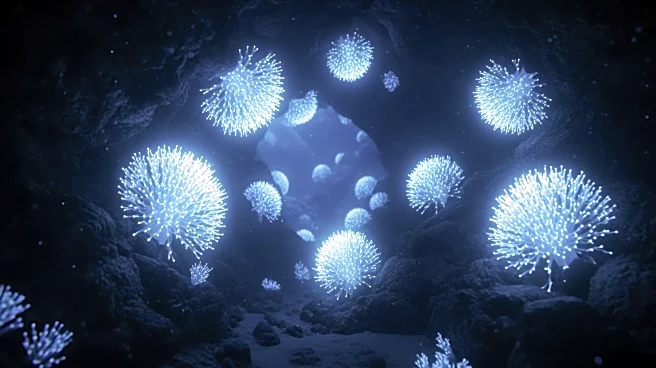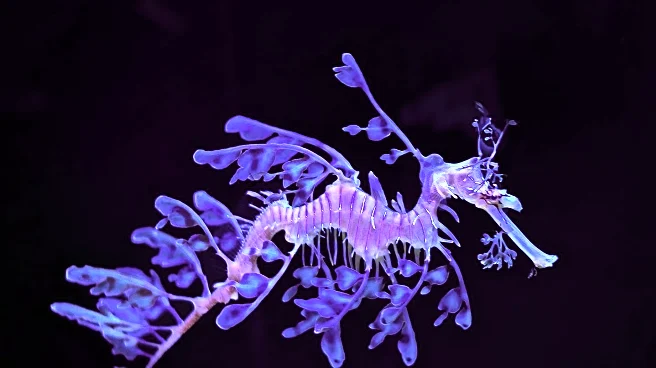What's Happening?
Researchers from the Japan Agency for Marine-Earth Science and Technology (JAMSTEC) have discovered a new species of bioluminescent coral, Corallizoanthus aureus, in a deep-sea cave near Minamidaito Island,
Japan. This discovery was made using a remotely operated vehicle (ROV) that explored 385 meters beneath the ocean surface. The coral emits a bright green light when disturbed, marking the first time bioluminescence has been documented in such an environment. The study, published in the Royal Society Open Science journal, suggests that the bioluminescence may serve as a defense mechanism, potentially attracting larger predators to ward off threats.
Why It's Important?
The discovery of Corallizoanthus aureus highlights the complex survival strategies of deep-sea organisms and underscores the potential for new scientific insights into marine biology. Bioluminescence in deep-sea environments is rare, and understanding its role could lead to advancements in ecological research and conservation efforts. The use of ROV technology in this discovery also demonstrates the growing importance of technological advancements in exploring and understanding the ocean's least accessible regions. This could pave the way for further discoveries that enhance our knowledge of marine ecosystems and their adaptations.
What's Next?
Future research will likely focus on understanding the ecological role of Corallizoanthus aureus and its bioluminescent properties. Scientists may explore how this discovery can inform broader studies on marine biodiversity and the evolutionary adaptations of deep-sea organisms. Additionally, the continued use of ROVs and other advanced technologies will be crucial in uncovering more hidden wonders of the ocean, potentially leading to new discoveries that could impact marine conservation strategies.













